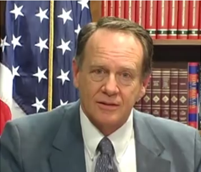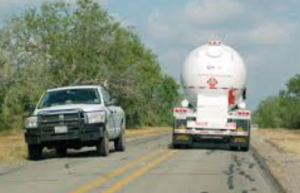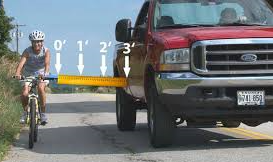The South Dakota Legislature is considering the passage of a bill dealing with bicycles on public roads.
HB1030 passed out of committee and is scheduled for a vote on the House floor today. Here is the text of the bill:
FOR AN ACT ENTITLED, An Act to provide certain restrictions regarding the passing of a bicycle.
BE IT ENACTED BY THE LEGISLATURE OF THE STATE OF SOUTH DAKOTA:
Section 1. That chapter 32-26 be amended by adding thereto a NEW SECTION to read as follows:
Section 2. That § 32-20B-6 be amended to read as follows:
32-20B-6. A person operating a bicycle shall give a continuous signal of intention to turn right or left during the last one hundred feet traveled by the bicycle before turning. The signal shall also be given while the bicycle is stopped waiting to turn. A signal by hand and arm need only be given intermittently if the hand is needed in the control operation of the bicycle. No driver of a bicycle may overtake another vehicle on the right if the overtaken vehicle is signaling to make a right turn. Except as provided in this section, a person operating a bicycle shall comply with the provisions of §§ 32-26-22 and 32-26-22.1. A violation of this section is a Class 2 misdemeanor.
Before Legislators cast their vote, we hope they consider this letter written by a rancher who shares his perspective on this bill:
The above cited amendment to chapter 32-36 has significant motorist driving and safety implications to many roads in South Dakota.
An example of one such road is written below.
Upper and Lower Spring Creek Road in Pennington County is a very scenic paved road in the foothills of the Black Hils and follows the creek bed at relatively shallow grades , but with significant curves. The road is 20 ft wide, with no shoulder and steep road ditches. It is posted as a 50 MPH road. Lower Spring Creek Rd is the only paved farm-to-market road for the rural land owners residing nearby. Because of its proximity to Rapid City and its features it becomes a common bicycling venue for hundreds of recreational users annually.
The most commonly cycled portion of Lower Spring Creek Rd has approximately 1 mile total of passing zone in the 5 mile area. This area has 24 curves , 9 blinding hills, and has 59 mailboxes. It seems obvious to the motorists who travel this road daily, that it would be impossible to provide 6 ft of passing distance to a bicycle that is already riding in his lane because there is no shoulder for the cyclist to utilize for safe riding.
Common traffic on this farm-to-market road, include, 102” wide semi-trailers, gravel  trucks, livestock trailers, feed hauling trailers, school buses, mail delivery trucks, fuel delivery trucks, and many other oversize and overwidth loads. Common mirror to mirror width is near 9 ft on semi trucks. When passing oncoming traffic the drivers of two trucks can provide less than 2 ft of total passing clearance to each other if they want to keep 6” from the ditch side white line. Providing 6 ft of passing clearance is obviously safe for the bicycle, but is not possible without completely (not partially) crossing the centerline to pass.
trucks, livestock trailers, feed hauling trailers, school buses, mail delivery trucks, fuel delivery trucks, and many other oversize and overwidth loads. Common mirror to mirror width is near 9 ft on semi trucks. When passing oncoming traffic the drivers of two trucks can provide less than 2 ft of total passing clearance to each other if they want to keep 6” from the ditch side white line. Providing 6 ft of passing clearance is obviously safe for the bicycle, but is not possible without completely (not partially) crossing the centerline to pass.
Allowing motorists to cross the centerline in no passing zones increases the safety risk for motorists to motorist collision and other motorist to low visibility subjects (i.e. oncoming bicycles, or pedestrians). No passing zones were never established with the idea that passing would be allowed in them. Narrow roads pose even higher risks for the amendment (if enacted).
This amendment places the entire burden of safety upon the tax paying, licensed, motorists and none of the safety responsibility upon the recreational bicycle user.
It is recommended that the amendment be amended to include the following wording.
“On roads posted with limits greater than 35 MPH a bicycle must provide the passing motorist the space to safely pass the bicycle by riding or stopping in such a manner as to allow 10 ft from the left side of the bicycle (including all projections) to the center of the passing/no passing line.”
Section 1. That chapter 32-26 be amended by adding thereto a NEW SECTION to read as follows:
The driver of any motor vehicle overtaking a bicycle proceeding in the same direction shall allow a minimum of a three foot separation between the right side of the driver’s vehicle, including any mirror or other projection, and the left side of the bicycle if the posted limit is thirty-five miles per hour or less and shall allow a minimum of six feet separation if the posted limit is greater than thirty-five miles per hour. Notwithstanding any other provision of law, a motor vehicle overtaking a bicycle proceeding in the same direction may partially cross the highway centerline or the dividing line between two lanes of travel in the same direction if it can be performed safely. The driver of the motor vehicle shall maintain that separation until safely past the overtaken bicycle. On roads posted with limits greater than 35 MPH a bicycle must provide the passing motorist the space to safely pass the bicycle by riding or stopping in such a manner as to allow 10 ft from the left side of the bicycle (including all projections) to the center of the passing/no passing line. A violation of this section is a Class 2 misdemeanor.
While this bill is obviously well-intentioned, if passed as currently written, it creates some serious problems. Please contact SD State Legislators TODAY.
Complete email list for all current Legislators HERE
Please share YOUR thoughts with Legislators, and send them a copy of this short letter from a South Dakota Rancher, who offers some common sense solutions.
***Gordon Howie is an author and CEO of Life and Liberty Media***
 “It’s not about right or left, it’s about Right or Wrong.”
“It’s not about right or left, it’s about Right or Wrong.”
You can help:
- pitch in a few bucks… hit the “Donate” button on this page
- “friend” me on facebook for daily updates
- SHARE the articles on this site with your network
- PRAY for our State and Nation (please pray for me too, if you can)




“Providing 6 ft of passing clearance is obviously safe for the bicycle, but is not possible without completely (not partially) crossing the centerline to pass.”
How does the rancher reason that to be true? As an example, (because house representatives used this number in their deliberations) let’s say a bicycle is three feet wide. In that case, if two trucks each nine feet wide can pass with two feet between them, then one truck and one bicycle can pass with at least eight feet between them, and thus they can pass with six feet between them while the truck partially straddles the center line (though, of course, it would be mostly in the oncoming lane).
“Allowing motorists to cross the centerline in no passing zones increases the safety risk for motorists to motorist collision and other motorist to low visibility subjects (i.e. oncoming bicycles, or pedestrians).”
The rancher is correct in saying that, but has any authority figure stated the amendment would allow crossing the centerline in no-passing zones? I think the amendment is unclear in that regard, because it says “if it can be performed safely”, and I know of no law pertaining to whether crossing the centerline in a no-passing zone is ever “safe”.
Having listened to the representatives’ deliberations, I speculate they put in the “Notwithstanding any other provision of law” phrase to account for SDCL 32-26-6 possibly disbarring partial lane driving. I imagine a further amendment (different from what the rancher suggested) could be made to specifically address no-passing zone laws 32-26-37 and 32-26-39.
“Narrow roads pose even higher risks for the amendment (if enacted).”
I disagree. Reckless decisions, rather than narrow roads, are what would pose those higher risks. If one can wait behind tractors and such before passing, one can wait behind a bicycle before passing.
“This amendment places the entire burden of safety upon the tax paying, licensed, motorists and none of the safety responsibility upon the recreational bicycle user.”
The bicycle is my preferred, primary transportation mode, and the only one I own. Even so, I pay federal income taxes, have a driver’s license, and on the occasions I use a family member’s car, also pay gas taxes. And I’m far from the only bicycle user who pays taxes that contribute to the development, construction, and maintenance of South Dakota’s roads. Many, being automobile owners, even pay motor vehicle excise taxes. If the rancher modified “motorists” with “tax paying, licensed” as commentary implying bicycle users’ right to the road is undeserved, he is far off base in that respect.
But I agree the bill places the safety burden on automobile users. I’m skeptical he cares for safety when he wishes that to be different, though, because in interactions between bicycles and motor vehicles, potential danger to bicycle users created by motor vehicles’ mass and speed is incomparably greater in magnitude than any potential danger to automobile users created by bicycles. If anyone acknowledges that massive imbalance and still thinks we should place more of the safety burden on bicycle users, I’d be curious to learn their exact basis for that conclusion.